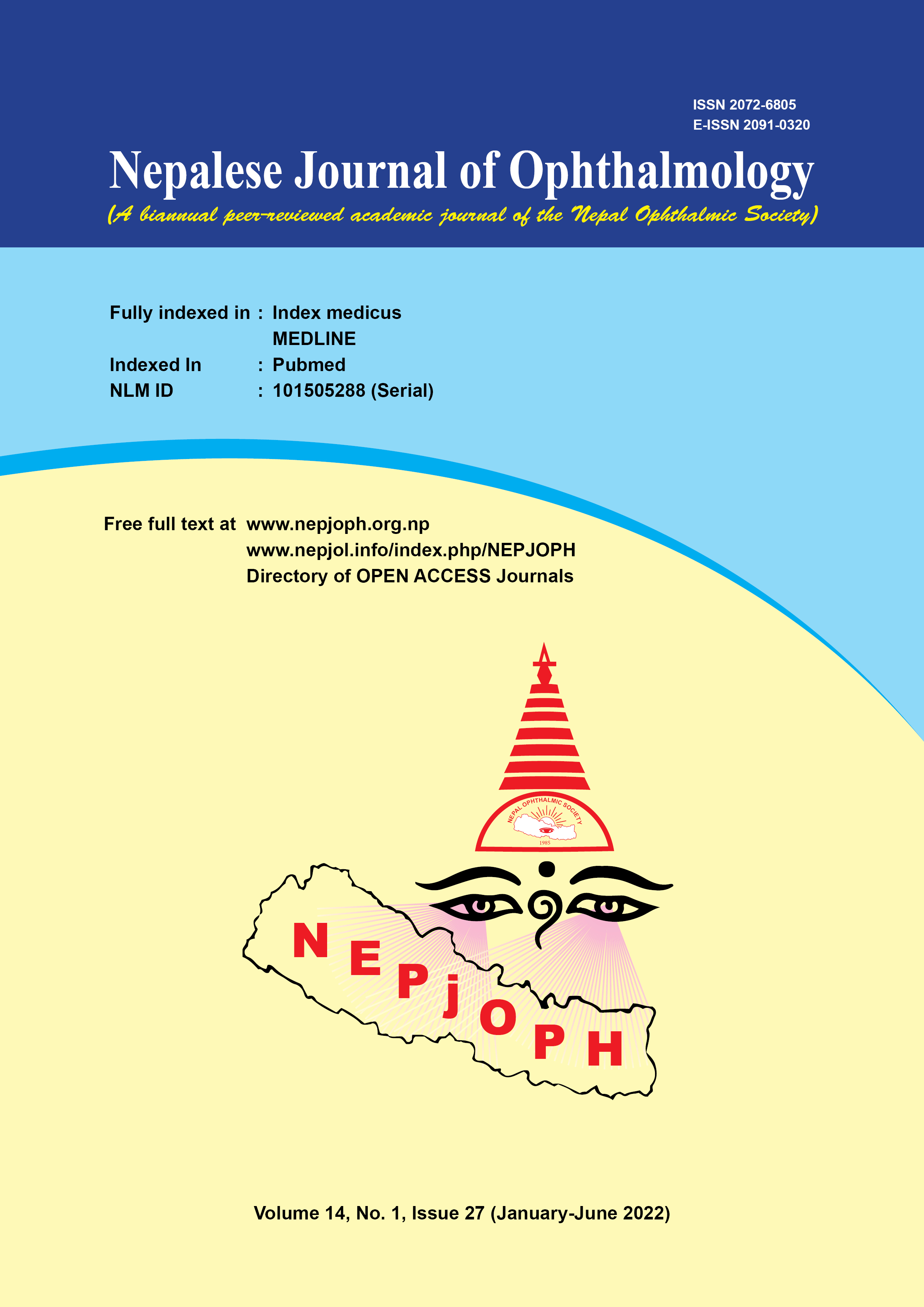Evaluation of Resident Satisfaction Towards Cataract Surgery Training in Nepalese Ophthalmology Residency Programs
DOI:
https://doi.org/10.3126/nepjoph.v14i1.37084Keywords:
Cataract surgery, Job satisfaction, MSICS, Ophthalmology residency, Surgical trainingAbstract
Introduction: Although cataract surgery training is considered an integral part of all ophthalmology residency programs in Nepal, there is no literature about the training patterns and its effectiveness. The objective was to study the perspectives of young ophthalmologists towards the patterns and quality of cataract surgery training in their residency programs.
Materials and methods: An anonymous web-based survey was conducted among MD Ophthalmology graduates completing their residency between January 2018 and December 2020 in Nepal.
Results: A total of 74 respondents included graduates from all 13 medical colleges under four universities/ academic bodies. All the respondents were primarily trained in Manual Small Incision Cataract Surgery technique (MSICS) with 28.4% (n=21) also having limited exposure to phacoemulsification. Overall, 62.1 % (n=46) of respondents had some exposure to wet lab training. Around 42% (n=31) had performed less than 25 cataract surgeries as a primary surgeon during residency and only 36.5 % (n=27) felt confident enough to perform cataract surgery independently after completion. More than 47 % (n=35) graded their cataract surgery training experience to be poor or below average.
Conclusions: Ophthalmology residency programs may need to reassess their surgical training methods as the majority of recently graduated ophthalmologists from Nepal feel inadequately trained in cataract surgeries.
Downloads
Downloads
Published
How to Cite
Issue
Section
License
Copyright (c) 2022 Nepalese Journal of Ophthalmology

This work is licensed under a Creative Commons Attribution-NonCommercial-NoDerivatives 4.0 International License.
This license enables reusers to copy and distribute the material in any medium or format in unadapted form only, for noncommercial purposes only, and only so long as attribution is given to the creator.




